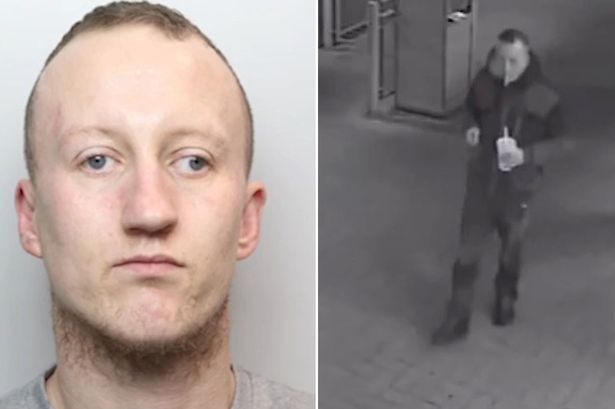Stuart Thompson, a predator who terrorized the streets of Manchester city centre, was sentenced to life imprisonment on Friday for a series of brutal rapes. CCTV footage, instrumental in his conviction, chillingly documented Thompson’s methodical hunting of vulnerable women, revealing a calculated and predatory pattern of behavior. He would stalk his victims through the city streets, often waiting for hours until they were isolated and vulnerable. The footage captured him following women, observing their movements, and ultimately selecting his targets based on their perceived vulnerability. This chilling premeditation highlighted the calculated nature of his attacks, demonstrating a conscious and deliberate choice to prey on unsuspecting individuals. The footage served as a stark reminder of the dangers lurking within seemingly safe urban environments and the crucial role surveillance plays in bringing perpetrators of violent crimes to justice.
The attacks themselves were characterized by extreme violence and a complete disregard for human dignity. Thompson employed a knife to subdue his victims, threatening them with grievous bodily harm if they resisted. This weapon became a symbol of his power and control, silencing his victims and forcing them into submission. Once he had established dominance, he subjected them to horrific sexual assaults, treating them, as the prosecution aptly described, “like pieces of meat.” This dehumanizing treatment underscored the profound psychological trauma inflicted upon the victims, reducing them to mere objects for his gratification. The use of the knife not only facilitated the physical assaults but also served as a constant reminder of the threat to their lives, amplifying the psychological impact of the rapes.
The courtroom heard harrowing testimony from the survivors, who bravely recounted the devastating impact of Thompson’s crimes. Their accounts painted a picture of lives shattered, marked by fear, anxiety, and profound emotional distress. They spoke of the ongoing struggle to cope with the trauma, the flashbacks, the nightmares, and the constant fear that haunts their daily lives. The courage they displayed in facing their attacker and sharing their experiences in court played a crucial role in securing Thompson’s conviction. Their testimonies stood as a testament to their resilience and served as a powerful reminder of the enduring impact of sexual violence on its victims.
The prosecution meticulously presented a compelling case against Thompson, weaving together the CCTV evidence, forensic evidence, and the powerful testimony of the survivors. The CCTV footage provided a visual narrative of Thompson’s predatory behavior, tracking his movements and placing him at the scene of the crimes. Forensic evidence, including DNA analysis, further corroborated the victims’ accounts and linked Thompson directly to the assaults. The combined weight of this evidence left no room for doubt, establishing beyond reasonable doubt Thompson’s guilt and paving the way for the life sentence handed down by the judge.
The judge, in delivering the sentence, condemned Thompson’s actions in the strongest possible terms, describing his crimes as “depraved” and “monstrous.” He highlighted the devastating impact on the victims, acknowledging the profound and lasting trauma they had suffered. The life sentence, he explained, was not only intended to punish Thompson for his heinous acts but also to protect the public from a dangerous individual. The judge’s words reflected the gravity of the crimes and sent a clear message that society will not tolerate such acts of violence against women. The sentence offered a measure of justice for the survivors, albeit one that could never fully erase the pain and suffering they had endured.
The case of Stuart Thompson serves as a chilling reminder of the vulnerability of women in public spaces and the persistent threat of sexual violence. It underscores the importance of continued vigilance, both on the part of individuals and law enforcement agencies, to create safer environments for women and to hold perpetrators of these crimes accountable. The bravery of the survivors in coming forward and sharing their stories played a crucial role in bringing Thompson to justice, demonstrating the power of speaking out against sexual violence. Their courage inspires hope that, through collective efforts, we can create a society where such acts are no longer tolerated and where survivors are supported and empowered to seek justice.














